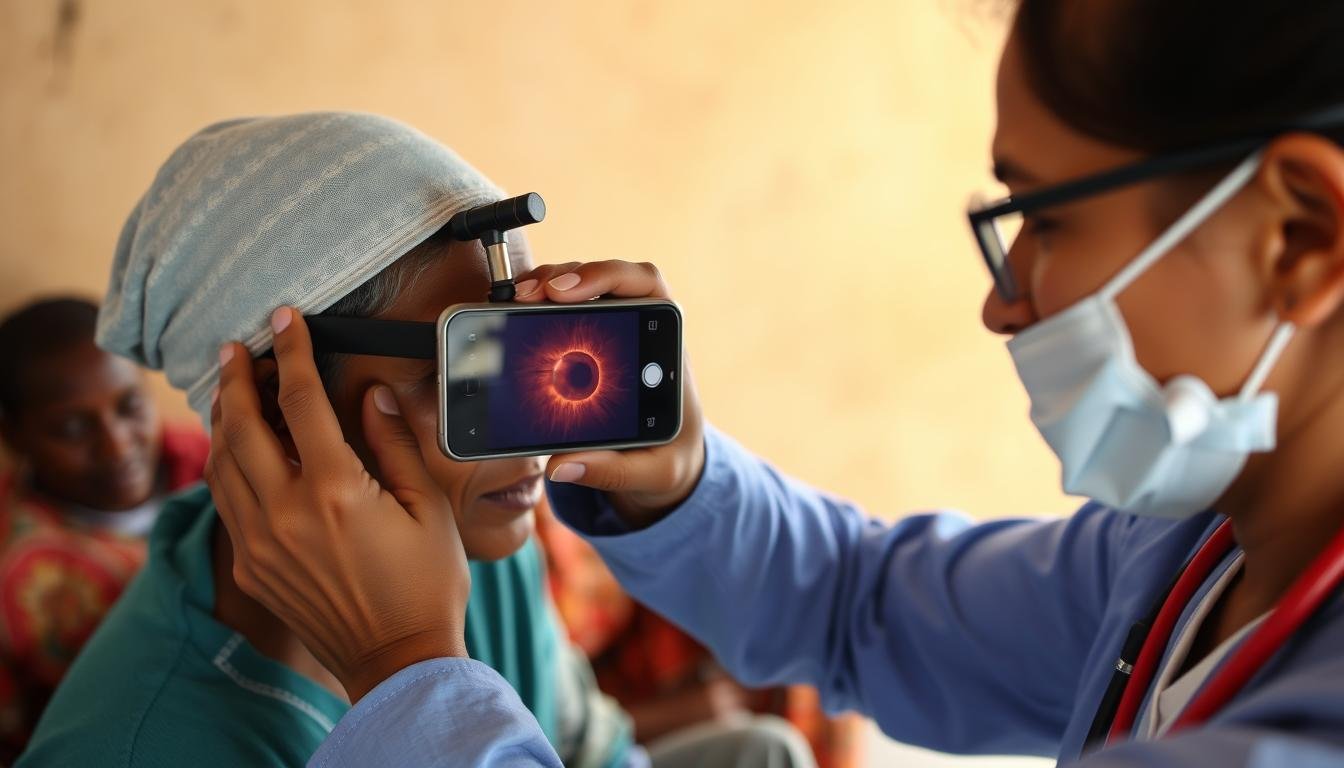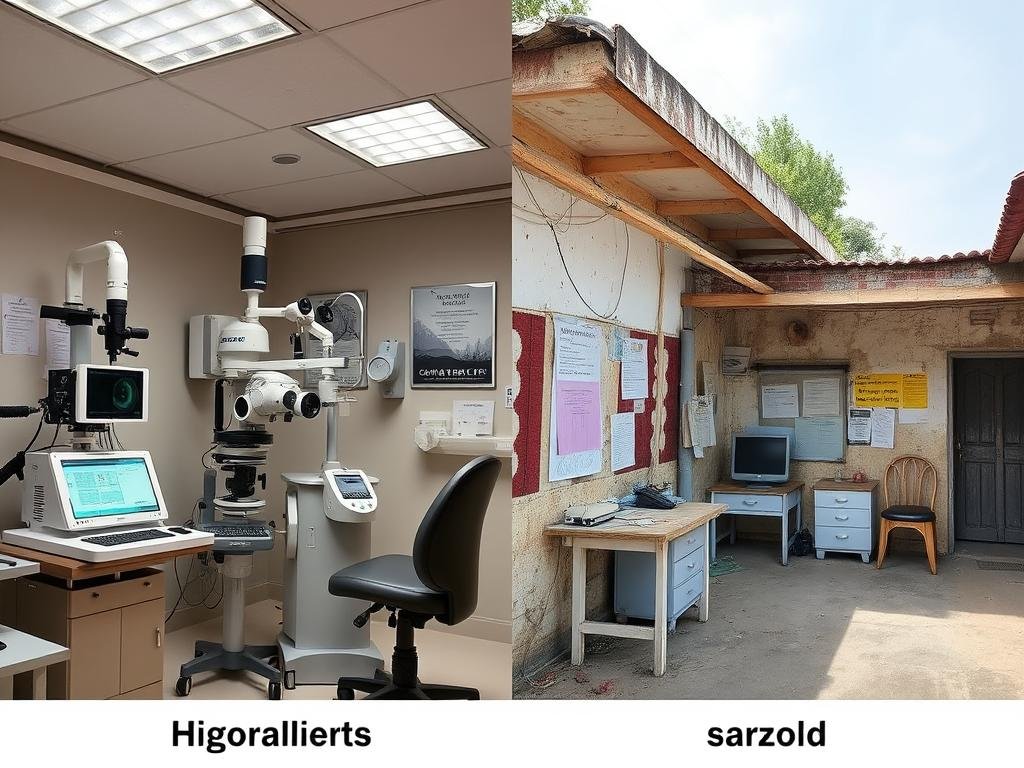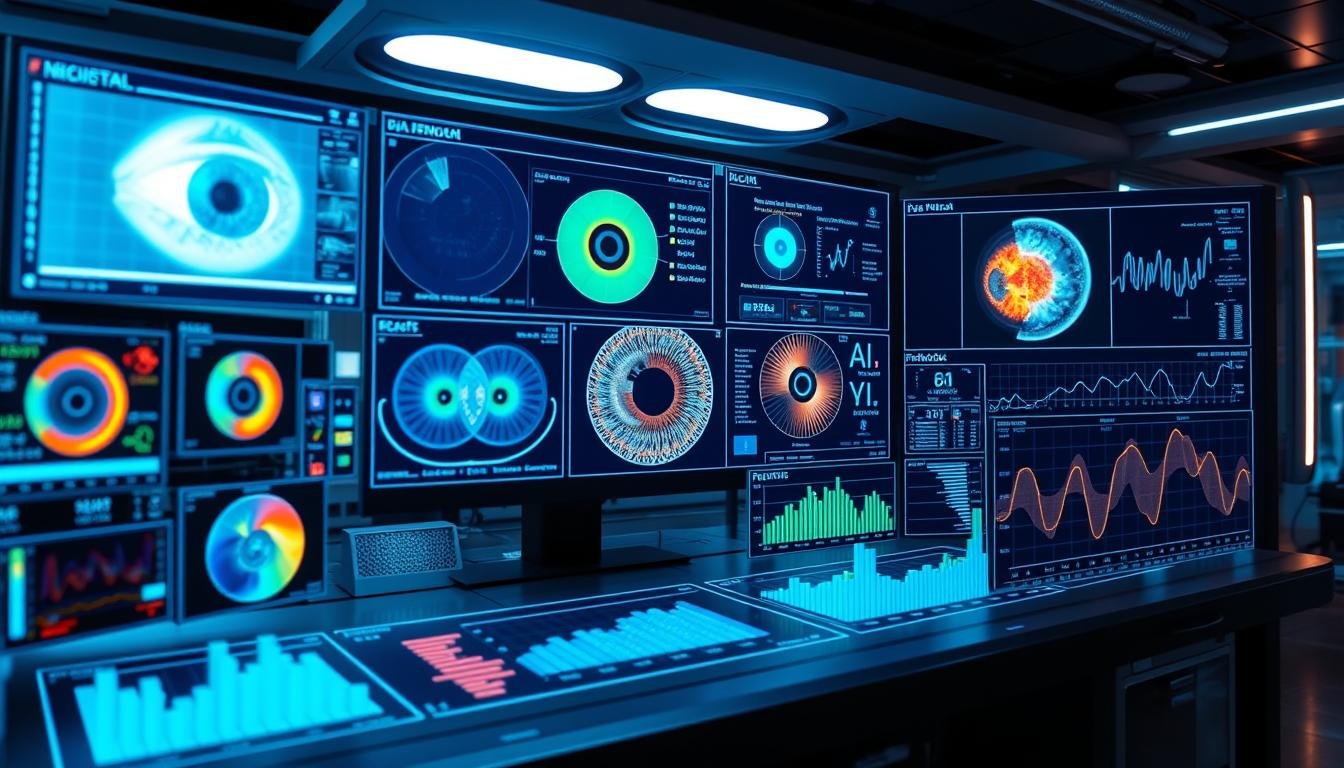The human eye, a remarkable sensory organ, serves as more than just our window to the world—it functions as a critical diagnostic window for healthcare professionals. The study of eyes has evolved significantly, revealing connections between ocular health and systemic diseases that transform how we approach modern medicine. As diagnostic technologies advance, our understanding of this complex organ continues to unlock new pathways for early disease detection, personalized treatment, and improved patient outcomes across the healthcare spectrum.
Eyes as Windows to Systemic Health
The ancient saying that eyes are “Fenster zur Seele” has found scientific validation in modern medicine—they are indeed windows to our overall health. The unique transparency of eye tissues allows healthcare professionals to directly observe blood vessels, nerves, and connective tissues without invasive procedures, making the eyes invaluable diagnostic tools.
Revealing Systemic Diseases Through Eye Examination
Many systemic conditions manifest early signs in the eyes before becoming apparent elsewhere in the body. Diabetes, for instance, causes distinctive changes in retinal blood vessels that ophthalmologists can detect before patients experience symptoms. These microvascular changes often precede clinical diagnosis of diabetes by several years, offering a critical early intervention window.

Hypertension similarly leaves its mark on ocular structures, with characteristic narrowing and irregularities in retinal arteries. Autoimmune disorders like rheumatoid arthritis and lupus frequently present with ocular inflammation, while neurological conditions such as multiple sclerosis can manifest as optic neuritis—inflammation of the optic nerve that may be the first indicator of the disease.
The Predictive Power of Ocular Biomarkers
Research has identified specific ocular biomarkers that correlate with cardiovascular health. Studies show that retinal vessel patterns can predict stroke risk with remarkable accuracy, while changes in the choroidal layer may indicate early Alzheimer’s disease. These biomarkers offer non-invasive means to assess disease risk and progression, revolutionizing preventive healthcare approaches.
Discover Your Eye Health Status
Early detection through comprehensive eye examination can reveal signs of systemic diseases before symptoms appear elsewhere in the body.
Finden Sie einen Augenpflegespezialisten
Advancements in Eye Diagnostics and Imaging
The field of ocular diagnostics has undergone remarkable transformation in recent decades, with technologies that provide unprecedented insights into eye structure and function. These advancements have revolutionized both the study of eyes and clinical practice.
Cutting-Edge Imaging Technologies
Optical Coherence Tomography (OCT) represents one of the most significant breakthroughs in ocular imaging. This non-invasive technology uses light waves to create detailed cross-sectional images of the retina with micrometer resolution, allowing visualization of individual retinal layers. OCT has transformed the diagnosis and management of conditions like glaucoma, macular degeneration, and diabetic retinopathy.

Adaptive optics, originally developed for astronomy, now allows visualization of individual photoreceptor cells in the living human eye. This technology has opened new avenues for understanding retinal diseases at the cellular level. Similarly, ultra-widefield imaging captures up to 200 degrees of the retina in a single image, compared to the traditional 30-45 degrees, enabling detection of peripheral retinal pathologies that might otherwise be missed.
AI-Driven Diagnostic Tools
Artificial intelligence has emerged as a powerful force in ocular diagnostics. Deep learning algorithms can now analyze retinal images to detect diabetic retinopathy with sensitivity and specificity comparable to human experts. AI systems are also being developed to predict glaucoma progression, identify age-related macular degeneration risk, and even estimate cardiovascular risk from fundus photographs.

| Bildgebende Technologie | Klinische Anwendungen | Key Advantages |
| Optische Kohärenztomographie (OCT) | Glaucoma, Macular Degeneration, Diabetic Retinopathy | Micrometer resolution of retinal layers; non-invasive |
| Adaptive Optik | Photoreceptor Disorders, Early Retinal Disease | Cellular-level visualization in living eye |
| Ultra-widefield Imaging | Peripheral Retinal Disorders, Diabetic Retinopathy | 200° field of view; single-capture imaging |
| OCT Angiography | Vascular Disorders, Choroidal Neovascularization | Non-invasive vascular imaging without contrast agents |
The Role of Ophthalmology in Personalized Medicine
The study of eyes has become integral to the advancement of personalized medicine, where treatments are tailored to individual patients based on their unique genetic, environmental, and lifestyle factors. Ophthalmology has been at the forefront of this revolution, particularly in areas of gene therapy and precision diagnostics.
Genetic Insights and Targeted Therapies
The eye has become a proving ground for gene therapy, with the first FDA-approved gene therapy for an inherited disease targeting a form of retinal dystrophy. This breakthrough treatment for RPE65 mutation-associated retinal dystrophy demonstrates how understanding the genetic basis of eye disorders can lead to highly targeted interventions that address the root cause rather than merely managing symptoms.

Pharmacogenomics—the study of how genes affect a person’s response to drugs—has particular relevance in ophthalmology. Research has identified genetic variants that predict response to treatments for age-related macular degeneration, allowing clinicians to select the most effective therapy for each patient and avoid treatments unlikely to benefit them.
Biomarker-Guided Treatment Approaches
Ocular biomarkers increasingly guide treatment decisions across various eye conditions. In glaucoma management, structural and functional measurements help determine the aggressiveness of treatment needed for individual patients. For retinal diseases, specific biomarkers visible on OCT scans can predict which patients will respond best to anti-VEGF injections, the standard treatment for wet macular degeneration.

Explore Advanced Diagnostic Options
Modern eye care utilizes cutting-edge technology to develop personalized treatment plans based on your unique ocular characteristics.
Learn About Advanced Eye Diagnostics
Eye Studies in Global Health Initiatives
The study of eyes extends beyond individual patient care to address global health challenges. Vision impairment affects over 2.2 billion people worldwide, with approximately 1 billion cases being preventable or treatable. This has prompted significant global initiatives focused on eye health as a fundamental component of universal healthcare.
Telemedicine and Remote Diagnostics
Tele-ophthalmology has emerged as a powerful tool to address disparities in access to eye care, particularly in underserved and remote regions. Mobile screening programs equipped with smartphone-based retinal cameras allow technicians to capture images that can be analyzed remotely by specialists or AI systems, bringing expert-level diagnostics to areas with limited healthcare infrastructure.

These technologies have proven particularly valuable for diabetic retinopathy screening programs in countries with high diabetes prevalence but limited ophthalmology resources. Studies show that implementation of such programs can reduce vision loss by up to 80% through early detection and timely intervention.
Capacity Building and Sustainable Eye Care Systems
Global initiatives like VISION 2020 and the more recent World Report on Vision by the World Health Organization emphasize building sustainable eye care systems integrated into national health services. These efforts focus on training local healthcare workers, establishing referral networks, and ensuring the availability of essential medicines and technologies.

Key Global Eye Health Challenges
- Uneven distribution of eye care specialists globally
- Limited access to diagnostic equipment in low-resource settings
- Financial barriers to treatment for preventable eye conditions
- Lack of integration between eye care and primary healthcare
Innovative Solutions
- AI-powered screening tools requiring minimal training
- Low-cost, portable diagnostic devices for field use
- Task-shifting strategies to train primary care providers
- Public-private partnerships for sustainable funding models
Challenges and Ethical Considerations
Despite remarkable progress in the study of eyes and its applications in healthcare, significant challenges and ethical considerations remain. Addressing these issues is crucial for ensuring that advancements in ocular research benefit all populations equitably and responsibly.
Accessibility and Healthcare Disparities
Advanced eye care technologies remain inaccessible to large portions of the global population. High costs of equipment, concentration of specialists in urban centers, and lack of insurance coverage create barriers that disproportionately affect vulnerable populations. These disparities are particularly pronounced for chronic conditions like glaucoma, where regular monitoring is essential but often unavailable to those with limited resources.

Ethical Implications of Genetic Research
As genetic testing becomes more integrated into ophthalmology, ethical questions arise regarding privacy, discrimination, and the psychological impact of predictive testing. The ability to identify genetic markers for conditions like age-related macular degeneration raises concerns about how this information might affect insurance coverage or employment opportunities.
Additionally, as gene therapy advances, questions of equitable access become paramount. The high cost of these treatments—often hundreds of thousands of dollars—raises concerns about creating a two-tiered system where cutting-edge therapies are available only to the wealthy or well-insured.
Benefits of Advanced Eye Studies
- Early detection of systemic diseases
- Personalized treatment approaches
- Non-invasive diagnostic capabilities
- Potential for preventive interventions
- Improved quality of life through vision preservation
Challenges to Address
- Unequal access to advanced technologies
- High costs of specialized treatments
- Privacy concerns with genetic testing
- Shortage of trained specialists globally
- Integration barriers with primary healthcare
Prioritize Your Eye Health Today
Regular comprehensive eye exams can detect both eye conditions and signs of systemic diseases in their earliest, most treatable stages.
Schedule a Comprehensive Eye Exam
Future Trends in Eye Studies
The study of eyes continues to evolve rapidly, with emerging technologies and research approaches promising to further transform our understanding of ocular health and its connections to overall wellbeing. Several key trends are likely to shape the field in coming years.
Integration of AI and Big Data
Artificial intelligence applications in ophthalmology are expanding beyond image analysis to encompass predictive modeling for disease progression and treatment response. Machine learning algorithms trained on vast datasets of clinical information can identify subtle patterns invisible to human observers, potentially revolutionizing how we predict, diagnose, and treat eye conditions.

The integration of electronic health records with imaging databases and genetic information will create unprecedented opportunities for population-level analysis, identifying new risk factors and treatment targets. These big data approaches may reveal previously unknown connections between ocular manifestations and systemic diseases.
Wearable Technology and Continuous Monitoring
Wearable devices for continuous eye monitoring represent another frontier in ocular research. Contact lenses with embedded sensors can now measure intraocular pressure throughout the day, providing more comprehensive data for glaucoma management than periodic in-office measurements. Similar technologies are being developed to monitor glucose levels through tear analysis, potentially transforming diabetes management.

Eye-tracking technology, increasingly miniaturized and integrated into everyday devices, offers new windows into neurological function. Changes in eye movement patterns can serve as early biomarkers for conditions like Parkinson’s disease, Alzheimer’s, and autism spectrum disorders, expanding the diagnostic role of eye studies beyond traditional ophthalmology.
Regenerative Medicine and Bioengineering
Stem cell therapies and tissue engineering approaches hold promise for conditions previously considered untreatable. Clinical trials are already underway using retinal pigment epithelium derived from stem cells to treat advanced dry age-related macular degeneration. Meanwhile, bioengineered corneas may help address the global shortage of corneal tissue for transplantation.

The Evolving Landscape of Eye Studies in Healthcare
The study of eyes stands at a pivotal intersection in modern healthcare—where clinical observation meets advanced technology, where individual patient care connects with global health initiatives, and where early detection can dramatically alter disease trajectories. As our understanding of ocular structures and their relationship to systemic health continues to deepen, the importance of eye studies in healthcare will only grow.
For healthcare professionals, staying abreast of developments in this rapidly evolving field is essential for providing optimal patient care. For patients, recognizing the eyes’ role as indicators of overall health underscores the importance of regular comprehensive eye examinations as an integral component of preventive healthcare.
The future of eye studies promises even greater integration with other medical specialties, more personalized approaches to diagnosis and treatment, and innovative solutions to global eye health challenges. By embracing these advancements while addressing existing disparities in access and care, we can work toward a future where preventable vision loss is eliminated and the insights gained through the study of eyes contribute to better health outcomes for all.












